Douvres-la-Délivrande
Caen and Abbaye d'Ardenne
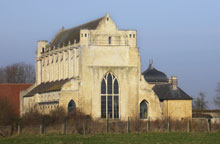
Abbaye d'Ardenne: Murder in Normandy, Trial in Germany
As the Allies prepared for their invasion of France in early June 1944, members of 12th SS Panzer (Hitlerjugend) Divison were deployed near Caen.
The impressionable young minds of the Hitler Youth had been subjected to a powerful regime of training that had sought to overcome their immaturity, exploit their idealism and youthful enthusiasm, and politically indoctrinate them in Nazi ideology.
The entire division, except for officers and NCOs, consisted entirely of boys aged 17 and 18. They were led and taught by veterans of the 1st SS Panzer Divison (Leibenstandarte) of the Eastern Front - all die-hard Nazis embittered by the vicious fighting in the east. For four weeks prior to D-Day the 12th SS Division, at full strength with between 20,000 and 21,000 all ranks and 214 tanks, was busy preparing for an anticipated Allied attack. Among the senior officers present was SS Colonel Kurt Meyer.
Kurt Meyer «Panzer Meyer»
Kurt Meyer was a battle-hardened, fanatical Nazi. A devout supporter of Hitler, he had joined Hitler's Bodyguard (Leibstandarte) in 1933 and all his subsequent service was with the SS. He had fought in Poland, France and Holland with the Adolf Hitler Division, and as regimental commander had played a key role in the Greek campaign. The intensity and brutality of the fighting on the Eastern Front needs no introduction and Meyer had helped to spearhead the German drive into Russia. Here he had displayed feats of fearlessness that would later mark his exploits in Normandy.
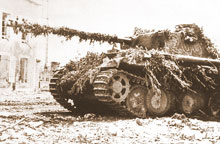
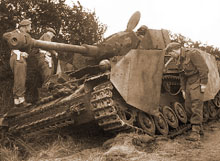
During his three years in Russia he had plunged deep into the Caucasus, and during his retreat was completely encircled by his opponent three times, on each occasion fighting his way out with only a handful of survivors. Meyer was not only willing, but apparently sought out ways of putting his life in peril by dashing into danger areas on his motorcycle; the multiple wounds he sustained during the war were ample proof of this.
While Meyer had proven to be a great tactician, he was also accused of unpalatable behaviour, such as burning villages and murdering women, children, and Soviet soldiers during the brutal fighting around Kharkov in 1943. He had been assigned to the 12th SS Panzer Division in the spring of 1943 and was Commander of the 25th SS Panzer Grenadier Regiment in early June 1944. He would take over as divisional commander on 13 June, following the death of Brigadefuehrer Witt.
First contact
The Canadians first came into contact with the 12th SS in the days following the Normandy landings. On D-Day+1, SS Lieutenant Colonel Karl-Heinz Milius threw his 3rd battalion at the Canadians during the battle for Authie.
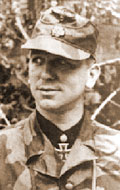
The North Nova Scotia Regiment and Cameron Highlanders thwarted this German counterattack, stopping the grenadiers in their tracks and bloodying the 12th SS Panzer division for the first time. The twenty-three Canadians captured by the Germans in Authie suffered a horrific fate that foreshadowed future atrocities at the hands of the SS troops. At the main intersection (at the southern end of the village) Canadian soldiers were disarmed, told to remove their helmets, and shot at close range. The young German troops further insulted the Canadian lives they had taken. In one incident, some German soldiers propped up the corpse of a murdered Canadian, placed an old hat on his head, and stuffed a cigarette box into his mouth. In another situation, eight of the lifeless Canadian bodies were unceremoniously dragged onto the street where they were repeatly mutilated by passing tanks, trucks and armoured vehicles. Appalled French onlookers later testified that SS troops whooped like drunken pirates at their handiwork.
The atrocities continued
Other Canadians were captured and taken to the Abbaye d'Ardenne, the headquarters of the German division where Meyer had watched the battle unfold. In the abbey garden eleven Canadians were interrogated and then killed on 7 June, each Canadian prisoner shaking hands with his comrades before being executed. At noon the next day seven more Canadians were shot at the Abbaye; their murders coincided with the execution of Canadian POWs on the Caen-Fountenay Road. The following evening Canadian prisoners were taken to the 12th SS's 2nd Battalion headquarters to meet their death. On the now tranquil grounds of the Château d'Audrieu, Canadian POWs were interrogated and duly executed, first in threes and later in more efficient larger numbers. These large-scale incidents represent 120 of 156 murders committed by the Hitlerjugend during the first ten days of the Normandy Campaign. Other murders took place on a smaller scale at locations like Bretteville-l'Orgueilleuse, Norrey and Le Mesnil-Patry. News of the murders began to filter back to the Canadian ranks in Normandy, but there was little immediate proof of the atrocities.
A Standing Courts
In response to reports of atrocities from escaped Allied prisoners of war and liberated French civilians, the Allied headquarters staff formed organizations to look into allegations of criminal activity beginning in the summer of 1944. Field Marshall Bernard Montgomery ordered two courts of inquiry while the Allied Supreme Commander, General Dwight D. Eisenhower, established a Standing Court of Inquiry under the Supreme Headquarters Allied Expeditionary Force (SHAEF) which began its work in August 1944. Investigations into murders yielded disturbing information.
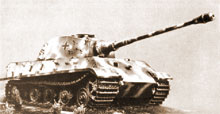
There was evidence of one hundred and fifty Americans who had been captured and murdered near Malmedy by 1st Panzer Division. Furthermore, the Allies began to realize the magnitude of the crimes committed by the 12th SS against Canadians. Between September 1944 and May 1945, for example, the bodies of the men killed at the Abbaye d'Ardenne were found in five shallow, unmarked graves.
Canadian War Crimes Investigation Units (CWCIUs)
At the end of the war, Canadian War Crimes Investigation Units (CWCIUs) were established to investigate alleged incidents of war crimes in Europe and the Far East. Number 1 CWCIU was led by Lieutenant-Colonel B.J.S. (Bruce) Macdonald, a lawyer and former Commanding Officer of the Essex Scottish Regiment. Macdonald had already participated in the SHAEF Court of Inquiry in which he had interviewed hundreds of German prisoners in North American POW camps and gathered information of alleged atrocities committed by Meyer's 25th Panzier Grenadier Regiment. Warrants were issued for the arrest of Kurt Meyer. «Panzermeyer» was before the Courts by December 1945. Meyer had been captured by the Americans in September 1944, but had concealed his identity for over a month by wearing a Wehrmacht uniform. Once identified as an SS officer, he was transferred to England for questioning and held there at a POW camp. Under the authority of War Times Regulations (Canada) P.C. 5831, a Canadian Military Court was established at Aurich, Germany. It was here that Meyer was to be sent to stand trial, under the Convening Authority of Major-General Chris Vokes, the General Officer Commanding (GOC) 3rd Canadian Infantry Division of the Canadian Army Occupation Force.
Gallery portraits of some of Murdered Canadian soldiers at Abbaye d'Ardenne
 Soldat James Alvin Moss. |
 Lieutenant Freddie Williams. |
 Soldat Walter George Doherty. |
 Caporal George Pollard. |
 Soldat Hugh Aller MacDonald. |
 Soldat Hollis Leslie McKeil. |
 Soldat Reginald Keeping. |
 Soldat Georges Edward Millard. |
 Soldat Ivan Lee Crowe. |
 Soldat George Richard McNaughton. |
 Lieutenant Thomas Alfred Lee Windsor. |
 Soldat Harold George Philip. |
 Soldat George Vicent Gill. |
 Soldat Charles Doucette. |
 Caporal Fah MacIntyre. |
 Soldat Roger Lockhead. |